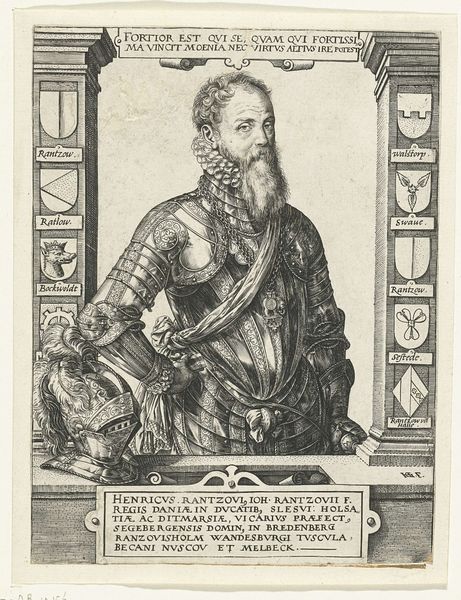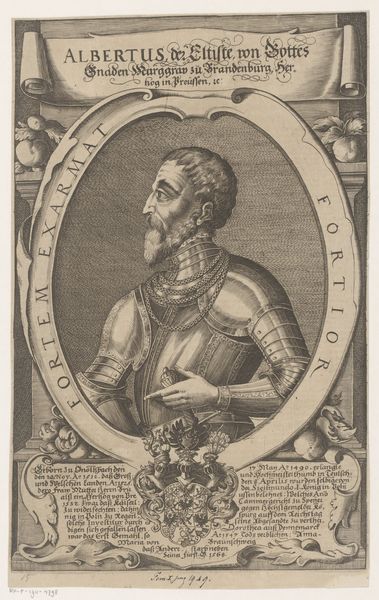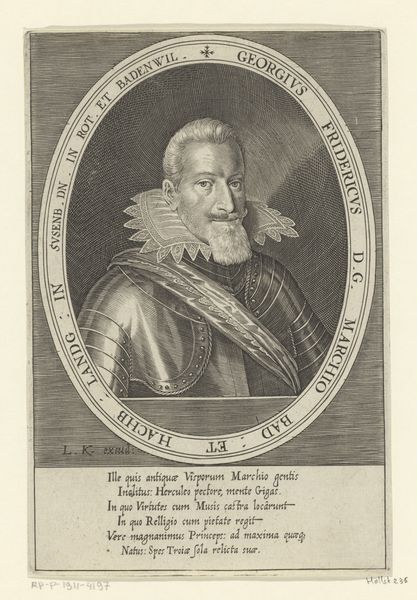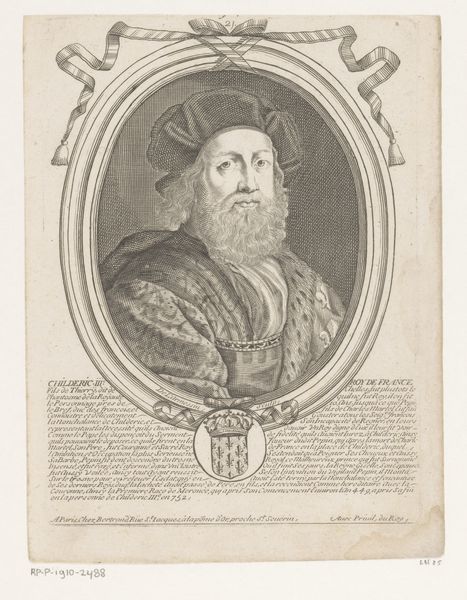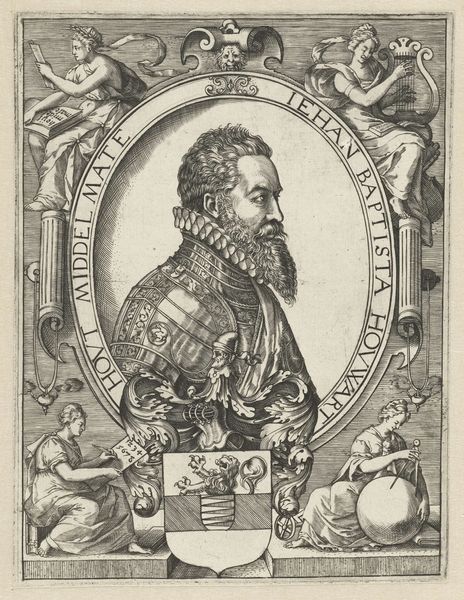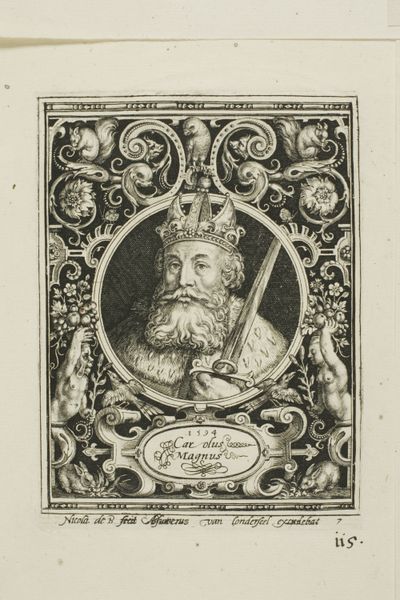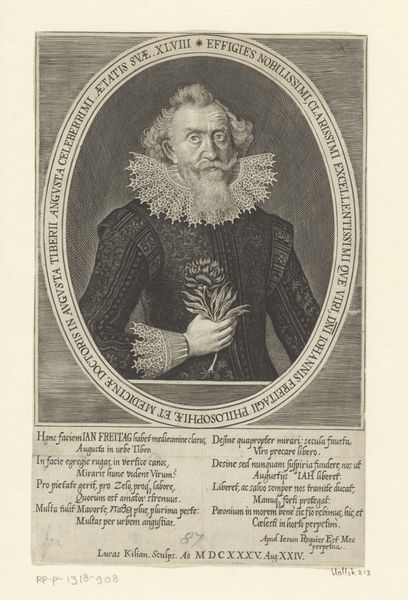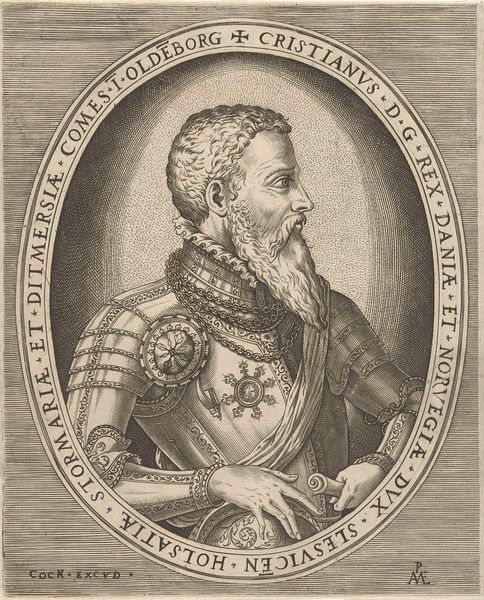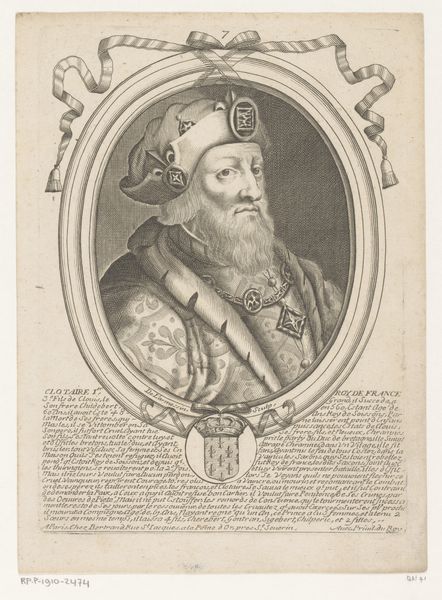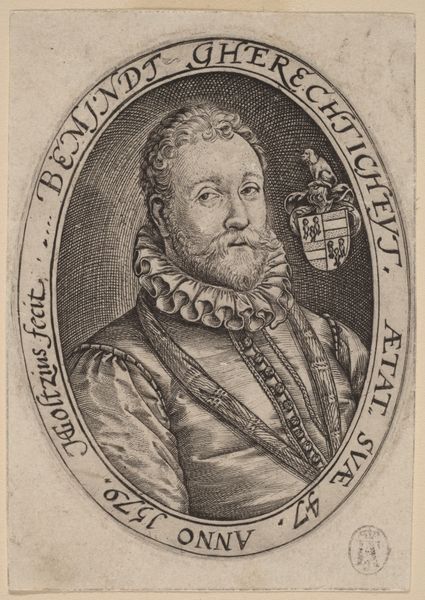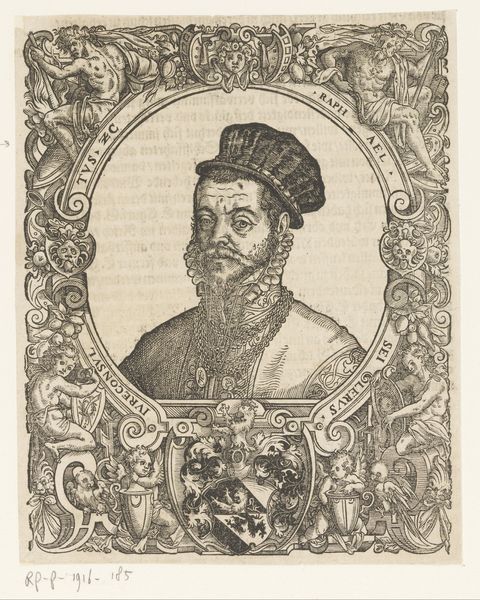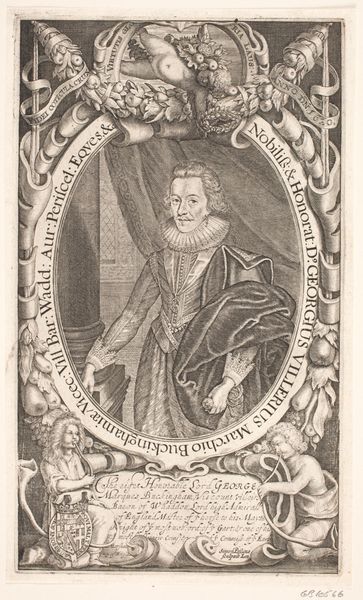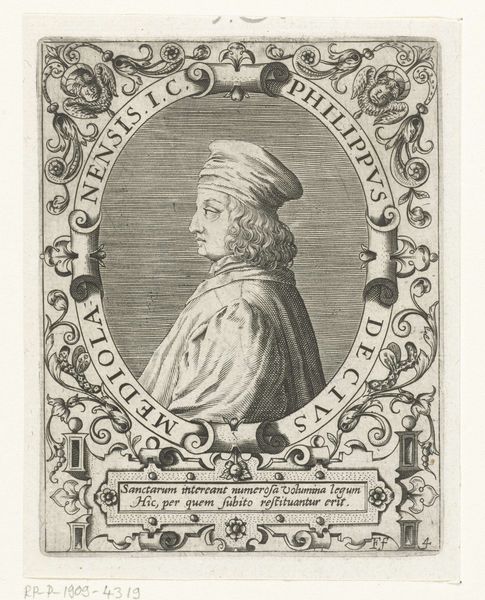
print, engraving
#
portrait
#
baroque
# print
#
history-painting
#
engraving
Dimensions: 261 mm (height) x 184 mm (width) (plademål)
Curator: Look closely at this detailed engraving, "Christian III," dating from 1703 to 1757 by Johann Christoph Sysang, currently held in the Statens Museum for Kunst. What’s your immediate reaction to it? Editor: All those lines, cross-hatching and tiny, tiny strokes! It feels incredibly dense. A huge amount of labor clearly went into creating it. Almost obsessive, like weaving or embroidery in metal. Curator: It’s fascinating how the density adds to the sense of solemnity, right? He’s presented within this oval frame adorned with text and symbols. Notice his armor; it immediately conveys authority and strength. Editor: Absolutely, the craftsmanship suggests the value placed on both the sitter and the art form. I’m also thinking about the process – the printing, the paper, the press, the number of impressions made and how each stage reflects early modern consumption and trade. Curator: Indeed. The armor not only protects, but signifies a defender of faith and territory, recurring themes in his time. And see how the coat of arms emphasizes genealogy and legacy? He’s being framed within a historical narrative. The inscription too. “Trust alone in God” is clear in intent: This man is favored. Editor: Thinking about that frame, its decorative quality speaks to a culture where art was also ornamentation, but even more importantly a system of manufacturing: design, etching, paper making, printing, and the economics behind disseminating it. How was it marketed? Who bought it? Who saw it? Curator: All vital points. Engravings such as this ensured widespread distribution, extending his image and therefore, his power, across vast distances. As such it's more than a likeness; it is political rhetoric and propaganda! Editor: Precisely. And while portraits painted for noble houses often get more art-historical attention, works like this show us the equally compelling material conditions under which visual meaning circulated for the aspiring middle classes of early modern Europe. The multiple and its audience. Curator: Examining both symbolism and manufacture lets us appreciate both intention and impact more deeply, and how lasting visual cues come into being. Editor: For sure. This kind of painstaking approach really gives me a lot to think about the means of circulating symbols in this context!
Comments
No comments
Be the first to comment and join the conversation on the ultimate creative platform.
